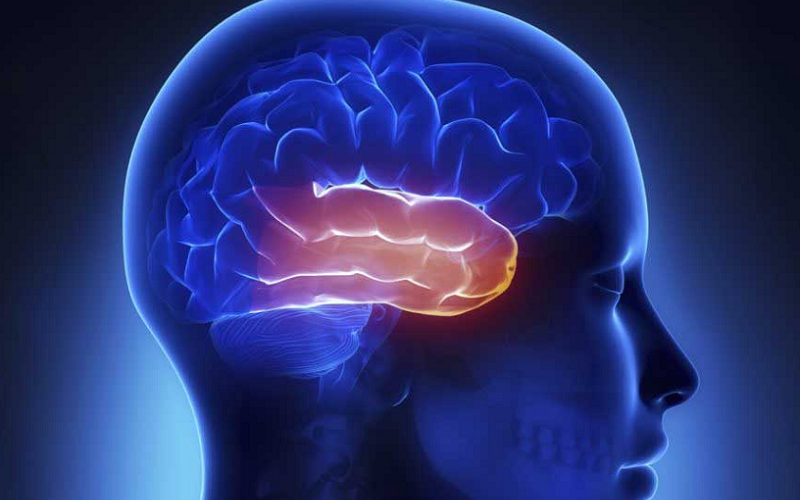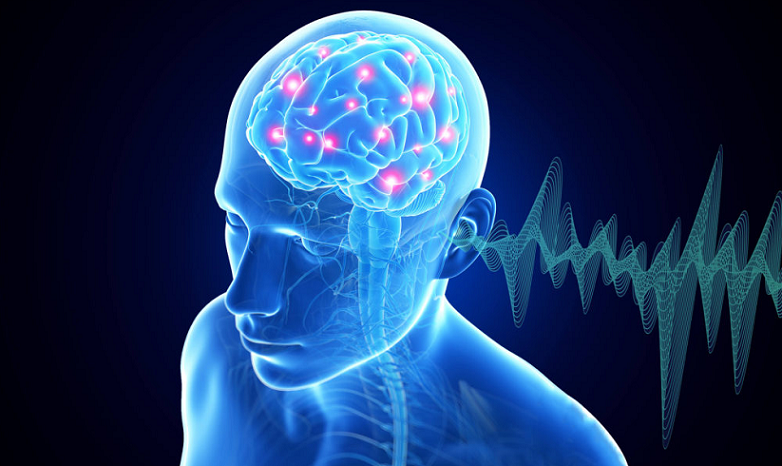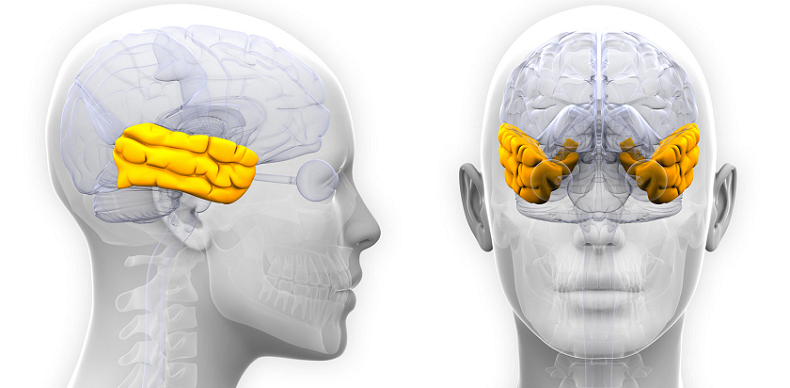
In the intricate landscape of the human brain, the temporal lobe holds a vital position, playing a significant role in auditory processing and memory. As one of the four primary lobes, it is responsible for converting the sounds we hear into meaningful experiences, and for encoding and retrieving memories that shape our lives.
Contents
Auditory Processing and the Temporal Lobe
Auditory processing is the brain’s ability to perceive, interpret, and make sense of the sounds we encounter in our daily lives. It is a critical cognitive function that allows us to communicate, navigate our environment, and enjoy the rich tapestry of auditory experiences, from the soothing melodies of music to the comforting voices of our loved ones.
The Role of the Temporal Lobe in Auditory Processing
The temporal lobe plays a central role in processing auditory information, housing both the primary and secondary auditory areas of the brain.
Primary auditory cortex
The primary auditory cortex, also known as Heschl’s gyrus, is located within the superior temporal gyrus of the temporal lobe. It serves as the first cortical processing site for auditory information. The primary auditory cortex is responsible for processing basic auditory features, such as frequency, intensity, and duration of sounds. This initial processing lays the foundation for the brain to identify and interpret more complex auditory stimuli [1].
Secondary auditory areas
The secondary auditory areas include the belt and parabelt regions, which surround the primary auditory cortex. These areas play a role in more advanced auditory processing tasks, such as speech perception, sound localization, and auditory pattern recognition. The secondary auditory areas integrate information from the primary auditory cortex with other sensory input, allowing us to perceive, categorize, and understand the sounds we hear [2].
The Auditory Pathway
The temporal lobe’s role in auditory processing is best understood within the context of the auditory pathway, a sequence of events that begins with the sound wave entering the ear and culminates in the brain’s interpretation of the sound as a meaningful experience.
Sequence of events from sound wave to neural signal
The auditory pathway starts with the sound wave entering the outer ear, passing through the ear canal, and vibrating the eardrum. These vibrations are transmitted to the middle ear, where the ossicles amplify them and transfer them to the inner ear. Here, the fluid-filled cochlea converts the vibrations into electrical signals, which are then carried by the auditory nerve to the brainstem.
The role of the temporal lobe in the auditory pathway
Once the electrical signals reach the brainstem, they travel to the thalamus, a crucial relay station for sensory information. From there, the signals are sent to the primary auditory cortex in the temporal lobe, where they undergo initial processing. The processed information is then relayed to the secondary auditory areas, which further refine and interpret the auditory information, ultimately allowing us to perceive and understand the sounds we hear.

Memory and the Temporal Lobe
Memory is a fundamental cognitive process that allows us to store, retain, and retrieve information about past experiences. It is essential for learning, problem-solving, and adapting to new situations. Memory can be broadly classified into three types: sensory memory, short-term memory, and long-term memory.
Sensory memory briefly stores information gathered from our senses, while short-term memory holds small amounts of information for short periods. Long-term memory, on the other hand, stores vast amounts of information for extended periods, even a lifetime.
The temporal lobe plays a crucial role in the formation and retrieval of long-term memories, particularly through the functions of the hippocampus and the amygdala.
Hippocampus
The hippocampus is a curved structure located deep within the medial temporal lobe, extending from the posterior to the anterior regions.
The hippocampus is vital for the formation of new memories and the consolidation of short-term memories into long-term memories [3]. It plays a significant role in the encoding of declarative memories, which encompass factual information (semantic memory) and personal experiences (episodic memory). The hippocampus is also involved in spatial memory, which allows us to navigate our environment and remember locations.
Amygdala
The amygdala is an almond-shaped structure located in the anterior portion of the medial temporal lobe, close to the hippocampus.
The amygdala plays a critical role in the processing and storage of emotional memories, particularly those related to fear and strong emotional experiences [4]. By assigning emotional significance to memories, the amygdala helps to prioritize and strengthen the consolidation of these memories, ensuring that they are more easily recalled in the future.

The Connection Between Auditory Processing and Memory
The temporal lobe encodes auditory information into memory, as well as playing a role in consolidating and retrieving these memories. This fascinating interplay between auditory processing and memory underscores the complexity and versatility of the human brain.
How Auditory Information Is Encoded in Memory
The relationship between auditory processing and memory begins with the encoding of auditory information into memory. This process involves the transformation of auditory stimuli into a format that can be stored and later retrieved.
Auditory sensory memory
When we first perceive a sound, it is briefly stored in auditory sensory memory, also known as echoic memory. This form of sensory memory holds auditory information for a very short duration, usually just a few seconds, allowing us to process and recognize incoming auditory stimuli.
Encoding process
The encoding of auditory information into memory requires the brain to transform the raw auditory signals into meaningful representations. The temporal lobe plays a critical role in this process, as its primary and secondary auditory areas process and interpret the auditory signals. The processed information is then integrated with other sensory input and contextual information to create a meaningful memory that can be stored in long-term memory.
The Role of the Temporal Lobe in Auditory Memory
The temporal lobe is deeply involved in both the consolidation and retrieval of auditory memories. Its various structures, particularly the hippocampus and the surrounding cortex, contribute to the formation, storage, and retrieval of these memories.
Memory consolidation and retrieval
The hippocampus, as a key structure involved in memory consolidation, helps integrate and store auditory memories within the broader context of our experiences. When we need to recall an auditory memory, the temporal lobe participates in the retrieval process, allowing us to access and reconstruct the memory [5]. This may involve the reactivation of the primary and secondary auditory areas, as well as other brain regions that were engaged during the original encoding of the memory.
The effect of damage to the temporal lobe on auditory memory
Damage to the temporal lobe, particularly the hippocampus and surrounding cortical areas, can significantly impact auditory memory [6]. Individuals with temporal lobe damage may experience difficulties in forming new auditory memories or retrieving previously stored auditory information. This can manifest in various ways, such as struggling to remember conversations, recognize familiar voices, or recall the lyrics of a song.
Research and Advancements in Temporal Lobe Studies
From groundbreaking insights into neuroplasticity to the development of novel treatments for auditory processing disorder and temporal lobe epilepsy, several research advancements showcase the temporal lobe’s ever-evolving landscape and its profound impact on human cognition and well-being.
Latest Discoveries and Research on the Temporal Lobe
The temporal lobe is an area of ongoing research and discovery, with scientists continuously uncovering new insights into its functions and mechanisms. Some of the most recent advancements in temporal lobe studies include:
Neuroplasticity
Neuroplasticity refers to the brain’s ability to reorganize its neural connections in response to new experiences, learning, or injury. Recent research has shown that the temporal lobe, particularly the auditory cortex, exhibits remarkable neuroplasticity, allowing it to adapt and modify its processing capabilities [7]. This plasticity has significant implications for understanding the brain’s capacity to recover from injury or adapt to new auditory environments.
Memory enhancement techniques
Researchers are actively exploring memory enhancement techniques that target the temporal lobe, particularly the hippocampus. These techniques include transcranial magnetic stimulation (TMS), transcranial direct current stimulation (tDCS), and pharmacological interventions, all aiming to boost memory performance by modulating the activity of the hippocampus and other temporal lobe structures [8].
Clinical Applications and Treatments
The growing understanding of the temporal lobe’s functions has led to the development of innovative treatments and interventions for various neurological and psychiatric conditions.
Auditory processing disorder (APD)
APD, also known as central auditory processing disorder (CAPD), is a condition characterized by difficulties in processing and interpreting auditory information. Individuals with APD may struggle with speech perception, sound localization, and auditory discrimination.
Recent advancements in temporal lobe research have informed the development of targeted interventions and therapies, such as auditory training programs, which aim to improve auditory processing skills by stimulating and retraining the brain’s auditory pathways [9].
Temporal lobe epilepsy (TLE)
TLE is the most common form of focal epilepsy and is characterized by seizures originating in the temporal lobe. These seizures can lead to memory impairments, language difficulties, and other cognitive issues. As researchers uncover more about the temporal lobe’s functions and neural networks, novel treatments for TLE have emerged [10].
These include surgical interventions, such as temporal lobectomy or selective amygdalohippocampectomy, and non-invasive techniques, such as responsive neurostimulation (RNS) and vagus nerve stimulation (VNS), which aim to reduce seizure frequency and improve the quality of life for individuals with TLE.
References
[1] Primary Auditory Cortex: An Overview
[2] Know Your Brain: Auditory Cortex
[3] Interplay of hippocampus and prefrontal cortex in memory
[4] Amygdala Function and Location
[5] The Influences of Emotion on Learning and Memory
[6] Temporal Lobe: What It Is, Function, Location & Damage
[7] The Blood-Brain Barrier: Understanding the Brain’s Natural Defense System
[8] Modulating Memory Performance in Healthy Subjects with Transcranial Direct Current Stimulation Over the Right Dorsolateral Prefrontal Cortex
[9] Train the brain with music (TBM): brain plasticity and cognitive benefits induced by musical training in elderly people
[10] Pathological Targets for Treating Temporal Lobe Epilepsy
